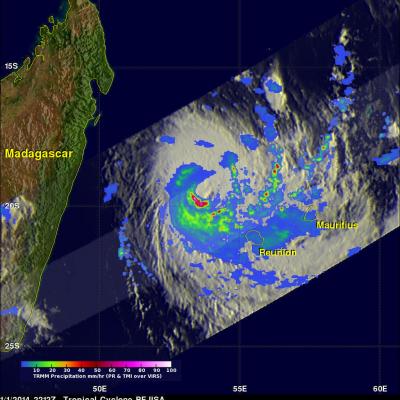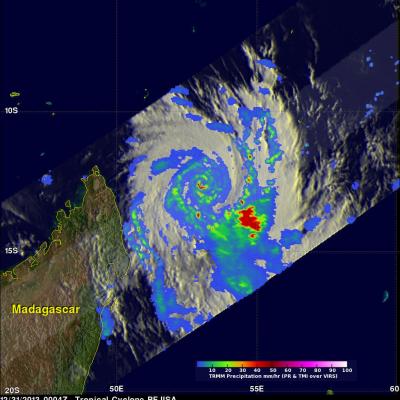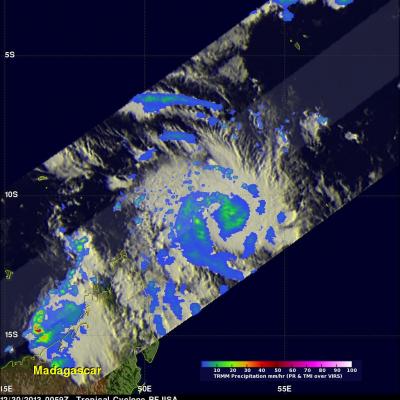Tropical Cyclone Bejisa Shown Menacing Reunion
Extremely powerful tropical cyclone Bejisa has passed just to the west of the French island of Reunion in the southwest Indian Ocean. Bejisa's forward speed and very powerful winds within the tropical cyclone made this a dangerous location for Reunion. Bejisa was moving toward Reunion when the TRMM satellite had an excellent view on January 1, 2014 at 2212 UTC. Bejisa had sustained winds estimated to be over 105kts (~121 mph) at the time of this pass making it equivalent to a category three hurricane on the Saffir–Simpson hurricane wind scale. A rainfall analysis that used data from TRMM's




